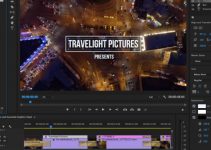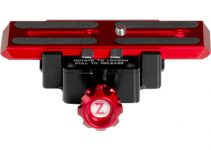The Canon C200 is a great camera and I particularly like it for doc style shooting. It has a beautiful image and a great feature set in a form factor that some love and some hate, but I am in the former group.
Dynamic range is one of the most quoted and important specs of your camera and essentially it means the amount of information you can capture in an image from black to white. It is not a measure of color, but it has a direct relationship to it.
In practical terms, it is all about exposure and how to deal with the scenes you are presented with, be it in a controlled or completely uncontrolled situation. The ability to use lights and light modification is a vital part of the filmmaker’s toolkit but knowing how your camera will handle the brightest to the darkest parts of your shot is equally important. Long story short, this video with Carlos Quintero looks at the dynamic range of the Canon C200.
The idea of ‘shooting to the right’ is common practice for log shooters, I myself shoot 2 stops overexposed in SLog 3. Why?
This ensures I have clean images without a lot of noise in the shadow areas when I shoot in log, as my base ISO is 2000 (Sony FS7 Cine EI Mode). Shooting in Log means I can recover a lot of the highlight areas in an overexposed image and balance my image more successfully in post.
The more stops of dynamic range your camera offers then the more recovery you will be able to do in post-production. However, it’s important to understand your image and how to get the best from it, not just to hope you can save bad shots in post.
The Canon C200 has become popular but there still seems to be some disagreement about its abilities with regards to dynamic range.
Clipping
If you ‘clip’ your image it means that the highlight information has reached a maximum level and more information can be digitally stored. There really is no saving this and it can be really ugly. There are times when clipping may not look terrible and be comfortably part of the image, for example, shooting into the sun, but generally, it should be avoided.
The takeaway from this video is simple – don’t blow-out/clip your highlights. If you do, they can’t be saved. Other cameras will offer different amounts of recovery but 3 stops seem to be the maximum with the C200. There is a juicy tease at the end of the above video for the same tests run with the RED Weapon 8K that you can check out below.
Apparently, the RED Weapon’s sensor is capable of handling even 4 stops of overexposing easily, whereas the C200 image is severely blown out under the very same conditions. As Carlos concludes, even though both cameras are using virtually the same compression levels while shooting Raw, the differences are apparent.
There are other factors to consider but again, it seems like a good rule of thumb to not overexpose your C200 footage with more than 3 stops.
Exposing the image well in camera, using whatever tools are at your disposal including lighting, ND, ISO, lensing and the meters and scopes on screen, is the best way to get the best out of your cameras dynamic range. Understanding your camera will let you push it to its limits without breaking your image.
[source: Carlos Quintero]
Order Links:
Canon EOS C200 Cinema Camera (EF-Mount) (B&H, Amazon)
Disclaimer: As an Amazon Associate partner and participant in B&H and Adorama Affiliate programmes, we earn a small comission from each purchase made through the affiliate links listed above at no additional cost to you.
Claim your copy of DAVINCI RESOLVE - SIMPLIFIED COURSE with 50% off! Get Instant Access!




